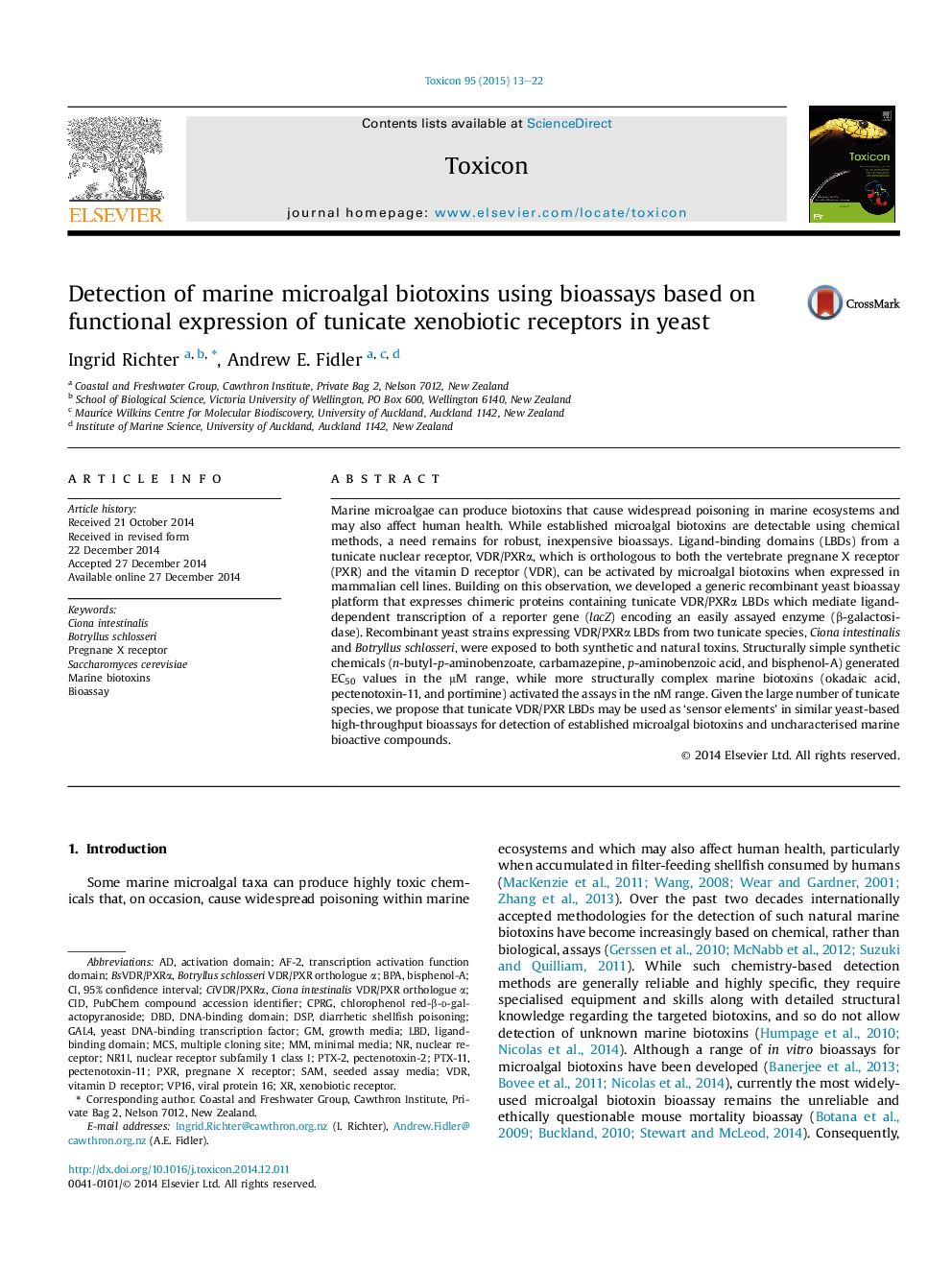| Article ID | Journal | Published Year | Pages | File Type |
|---|---|---|---|---|
| 8395621 | Toxicon | 2015 | 10 Pages |
Abstract
Marine microalgae can produce biotoxins that cause widespread poisoning in marine ecosystems and may also affect human health. While established microalgal biotoxins are detectable using chemical methods, a need remains for robust, inexpensive bioassays. Ligand-binding domains (LBDs) from a tunicate nuclear receptor, VDR/PXRα, which is orthologous to both the vertebrate pregnane X receptor (PXR) and the vitamin D receptor (VDR), can be activated by microalgal biotoxins when expressed in mammalian cell lines. Building on this observation, we developed a generic recombinant yeast bioassay platform that expresses chimeric proteins containing tunicate VDR/PXRα LBDs which mediate ligand-dependent transcription of a reporter gene (lacZ) encoding an easily assayed enzyme (β-galactosidase). Recombinant yeast strains expressing VDR/PXRα LBDs from two tunicate species, Ciona intestinalis and Botryllus schlosseri, were exposed to both synthetic and natural toxins. Structurally simple synthetic chemicals (n-butyl-p-aminobenzoate, carbamazepine, p-aminobenzoic acid, and bisphenol-A) generated EC50 values in the μM range, while more structurally complex marine biotoxins (okadaic acid, pectenotoxin-11, and portimine) activated the assays in the nM range. Given the large number of tunicate species, we propose that tunicate VDR/PXR LBDs may be used as 'sensor elements' in similar yeast-based high-throughput bioassays for detection of established microalgal biotoxins and uncharacterised marine bioactive compounds.
Keywords
CIDchlorophenol red-β-d-galactopyranosideCPRGBotryllus schlosseriCiona intestinalisPXRVP16VDRpectenotoxin-2AF-2BPADBDMCsLBDDSPSAMBioassayBisphenol-AMarine biotoxinsDNA-Binding Domainligand-binding domainactivation domainMinimal mediaGrowth mediaSaccharomyces cerevisiaemultiple cloning site95% confidence intervalDiarrhetic Shellfish PoisoningGal4Vitamin D receptorPregnane X receptorNuclear receptor
Related Topics
Life Sciences
Biochemistry, Genetics and Molecular Biology
Biochemistry, Genetics and Molecular Biology (General)
Authors
Ingrid Richter, Andrew E. Fidler,
